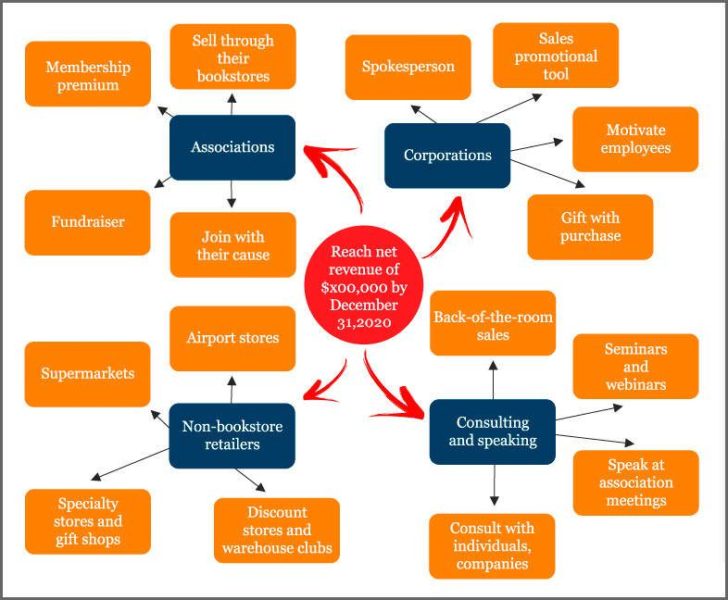
- June 6, 2020 - 
Creative Book Marketing Ideas for Selling Your Books!
Creative book marketing ideas can be found in various examples from real life. The Titanic sank after hitting an iceberg and only 705 of its 2200 passengers and crew survived. With too few lifeboats onboard, many lives were lost unnecessarily. With a little creativity, more people might have been saved. For example, what if the crew saw the iceberg as a sanctuary instead of a cause of death? They might have ferried people there. Unfortunately, we’ll never know.
There is an important lesson from that tragedy that can help us solve more problems. The lesson?
When you look at something do not think of it only in traditional terms. The crew of the Titanic saw the iceberg as a menace to be avoided. They overlooked possible solutions hidden in plain sight, much like publishers overlook the opportunity for lucrative sales to buyers in non-bookstore markets.
You can avoid this phenomenon and destroy your hidden creative blocks by applying at least two techniques.
One is to change the way in which you define the object or situation, thus expanding its possible uses.
The other is to visualize alternative paths to reaching your goal.
Write your objective so it stimulates ideas
What if you were on a camping trip and needed a piece of string?
You might look around and see only camping paraphernalia and candles. But hidden inside each candle is a piece of string. You might not see it if you think of the candle’s wick only as a source of light.
The analogy for publishers is that they look at their product and see a book. Instead, describe its contents and its uses become more varied and more widely applicable – and perhaps more profitable. Do this by asking yourself questions that keep breaking it down to its basic elements.
If you look at your book as a source of information, ask who needs it?
How could they benefit from it? Who else could use and benefit from it? Where and when do they search for that information? In what form do they prefer to have it delivered?
This could lead you to provide your content in printed, electronic or audio form. Or, delivering it through booklets, seminars or as a consultant.
You may feel this is a minor matter of semantics, but creative problem-solving consists of two connected activities: describing your objective and coming up with multiple solutions.
The words you use to describe your product or circumstances are important
If you were asked to glue something to a wall you would search for a tube of glue and do it. But what if you are asked to fasten something to a wall?
You might also think of tape, tacks, nails, Velcro, push pins, etc.
Apply this to your publishing business as you finalize your 2020 marketing plan. Write your goals differently to find new ways to reach them.
A goal to “Sell X0,000 books by December 31, 2020” places your focus on selling books. If you say, “Reach net revenue of $X00,000” you expand your definition to focus on content and different paths to it.
Then rephrase your goal as a question: “In how many ways can we reach net revenue of $X00,000?”
This expands your focus to think of multiple ways to attain it. This could be by selling your content in a book, booklet, ebook or other format.
If you change the operative word to expand or grow you could expand your product line, pool of authors, other markets, new users or new uses for your content.
You could grow revenue through corporate sales, selling to associations, generating recurring revenue, consulting and/or speaking.
Visualizing the path to reaching goals
Some people are more visually oriented and are not motivated by words.
Going back to the Titanic story, what if the passengers and crew looked around for things that float? They might have used wooden tables as lifeboats, or used them as platforms between lifeboats.
There were 40 cars on the ship, and assuming each had four tires with tubes another 160 people might have been saved.
Even more passengers might have been saved if they used the tubes to float the wooden tables. They might have even used empty passenger trunks as floats, at least until the Carpathia arrived.
You might think it unreasonable to come up with these creative ideas with only 2.5 hours to live. And you would be correct.
But that demonstrates the importance of planning.
If the crew had a brainstorming session before leaving port, the innovative life-saving activities would have been second nature. They might even have removed all the tire tubes before departing.
Back to the business of publishing and creative book marketing ideas. Adapt the concept of mind mapping to create a market map to help you think of additional opportunities.
Below is a graphic representation of a Market Map for Special Sales.
First list the major niches in which you could compete. For example, you could sell your books to buyers in associations, corporations and through non-bookstore retailers.
You could also sell your content by consulting or with back-of-the-room sales after speaking events.

Next, look for different ways to help buyers in each segment solve their problems.
For example, associations want to increase their membership. Offer your book a premium – a thank-you gift for joining or renewing one’s membership.
Similarly, corporate marketing executives want to increase the sale of their products. Propose your book as a promotional tool as an incentive for people to buy their product.
Human Resource professionals want to motivate or educate their employees. Present your book as the solution.
Non-bookstore retailers buy through distribution networks with which you are already familiar. Think of how the retailers’ customers could use your content, and then demonstrate to the store buyers how your content and promotion will help them increase their store traffic and profits.
There are so many creative book marketing ideas!

